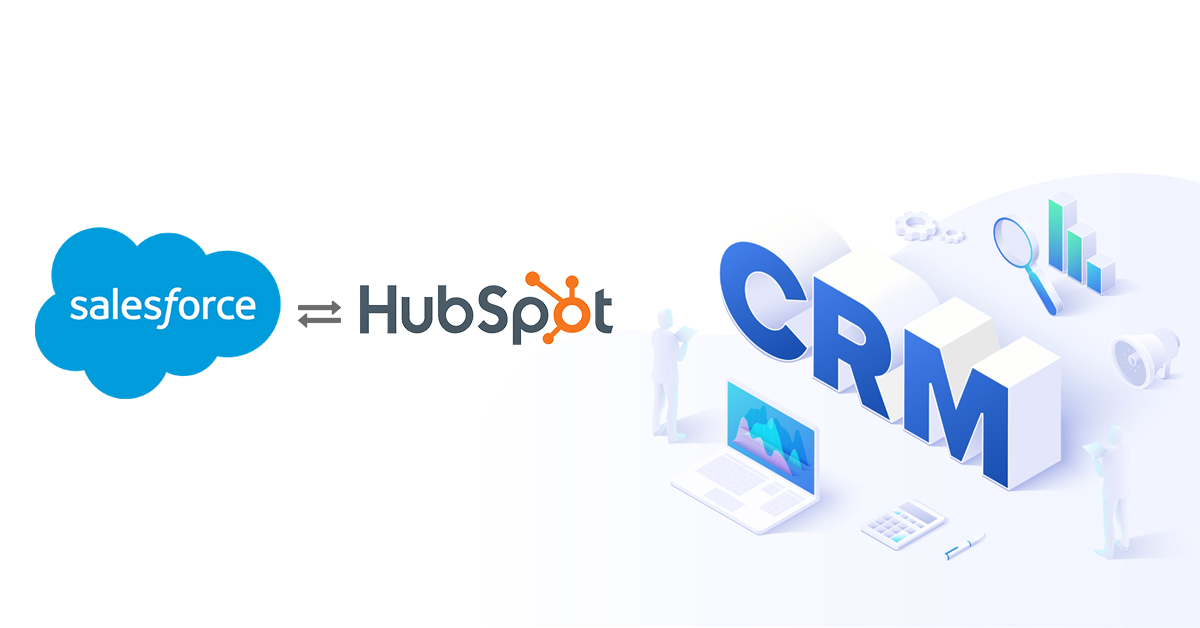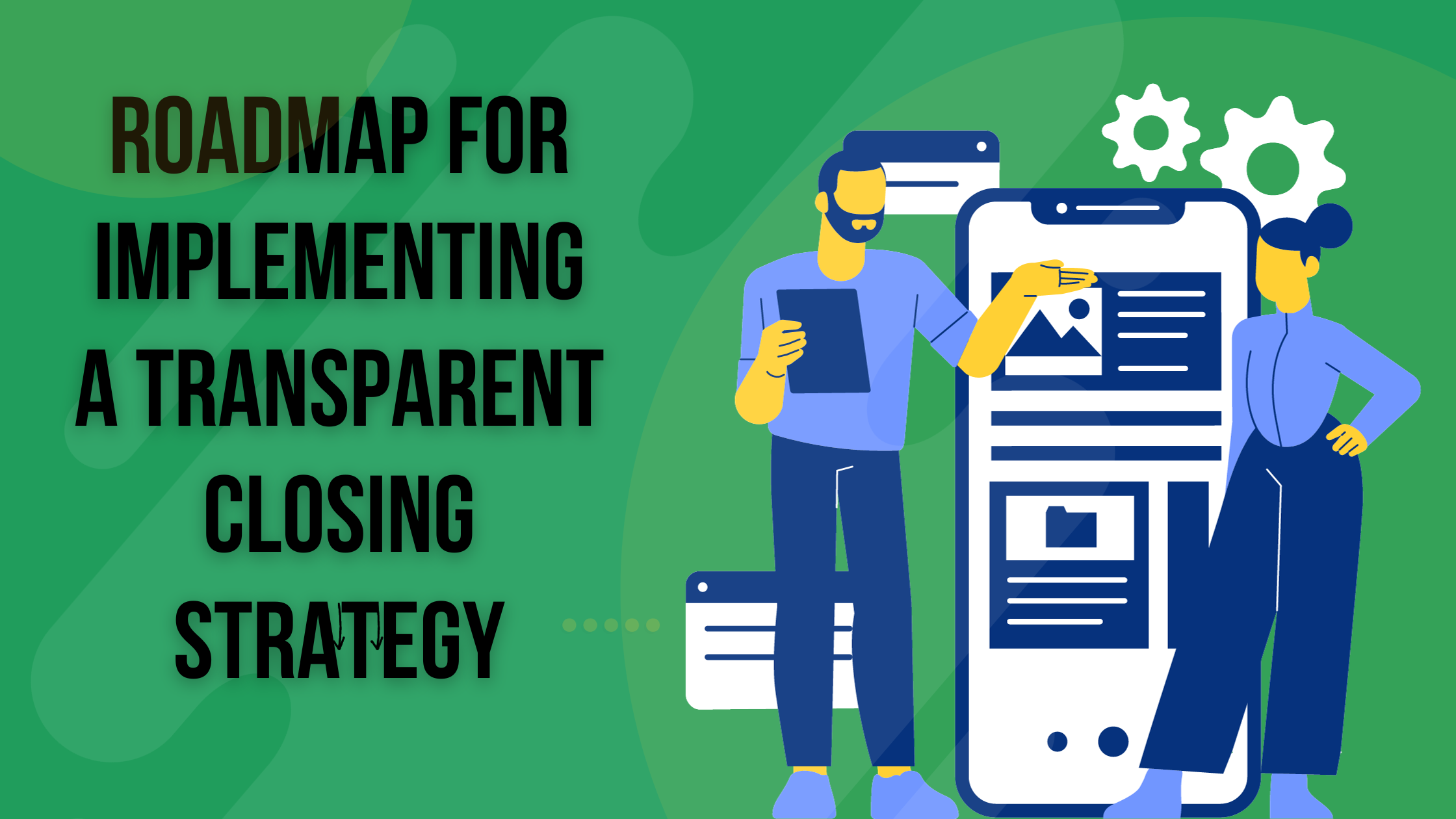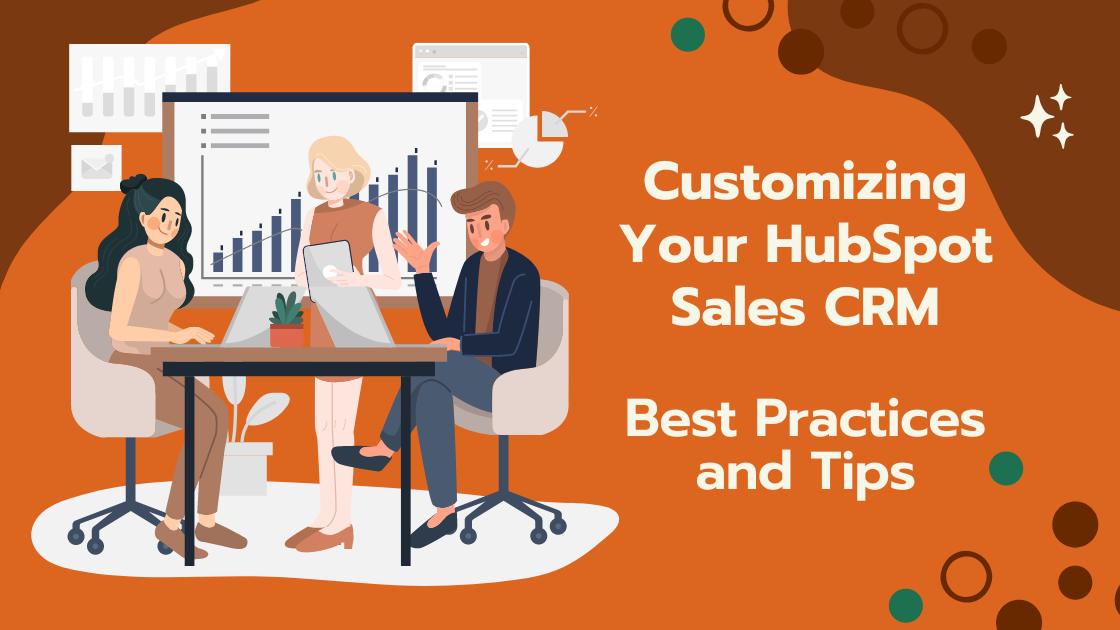5 Benefits of HubSpot-Salesforce Integration
October 13, 2021

If you’re already on SalesForce, integrating Hubspot is like adding a booster rocket to charge up sales. Get the power of inbound marketing and integrating sales channels to align internal teams managing both the functions.
That's because integrating HubSpot and SalesForce opens up immense possibilities. HubSpot and SalesForce share an open relationship with each other, making your marketing and sales work together towards meeting company goals. Both companies have similar audiences and features, but they serve different purposes.
HubSpot’s CRM works as a free enhancement to the main software for sales and marketing teams, while Salesforce’s CRM forms the core platform that the company’s thousands of apps, integrations, and features interact with. And both companies understand the value of each other’s platform, as they offer integrations for you to get the best of both worlds.
How do HubSpot and Salesforce work in tandem?
1) Streamline lead Hand-off Process
Once a HubSpot contact meets the inclusion list criteria, that record will be synced into Salesforce for the sales team to follow up. Consider how critical it is to follow up with leads quickly, this is a key measure to minimize any delays and get prompt answers to the questions of your prospects.
2) Access to HubSpot Intelligence from Salesforce
While previously a custom intelligence object existed within the layout, the integration moved to incorporate this information at the field level to increase data usability. Users can also leverage the same filtering capabilities in the new iframe design for timeline activities. Now you can see a contact’s activity and engagement with various marketing initiatives at-a-glance, which will provide the context needed to begin the conversation at the right point in the initial outreach.
3) Pipeline Visibility
By syncing your Salesforce pipeline with HubSpot CRM, your marketing team finally will have a window to look at the data, post-handover. Marketers invest all their time and energy to generate leads, which they hope will be qualified but they never know what happens to those leads after being handed over to the sales team. This visibility addresses concerns such as lack of alignment, inability to make data-driven decisions, and decreased motivation.
4)Assign contacts to particular Salesforce campaigns
You can assign members to their respective status on the basis of specific marketing activity and engagement to more accurately measure campaign success and overall ROI using the HubSpot workflow tool. Using the HubSpot workflow tool, create and assign tasks to Salesforce users based on different triggers; for example, the contact owner could be assigned a follow-up task after a lead visited the pricing page 3+ times in a month.
Tips to keep in mind during this Integration
Once you integrate these two platforms, possibilities for sales and marketing actions are endless. The integration of HubSpot and Salesforce has enabled HubSpot users to incorporate rich data related to lead tracking into their Salesforce platform, so the sales teams can have data on their fingertips when they contact leads for the first time.
Here are few tips we have compiled for you to watch out during the integration process.
1) Know your Sales Process from A to Z
By knowing your sales process, you will understand what information is most important and what you need to capture in HubSpot. Start by outlining what information about a prospect you need. Then move down to leads.
By digging into some details like what qualifies them? Do you care about their title or company size? Is there a single piece of information that automatically turns a lead from an MQL to SQL? These will help you ensure that you’re solving for every step of the buyer's journey and creating proper fields prior to setting up the integration.
2) Sync only what’s necessary
Sometimes it may make sense to have complete open sync, but these situations are usually counted on one hand. The last thing you need your sales team to not do is to hunt through unnurtured or irrelevant records to find those amazing sales-ready leads. You can ensure that your Salesforce installation runs smoothly by creating an inclusion list that segments only those truly qualified, "chosen ones." This also prevents you from using HubSpot Activities for Salesforce storage space.
According to Podbox, "It takes up 2 KB of storage space every time you sync a HubSpot activity with Salesforce." That could result in a huge amount of data considering the number of possible activities. And besides, removing Salesforce activities is no small task.
Including only those above a certain lead score is a great way to segment the leads. This way you will know what is going on in your database by updating only the best SQLs, while the rest are still being nurtured in HubSpot.
3) Use hidden fields
Hidden fields can be used to help segment and streamline internal processes. You can set different fields such as lead source, lifecycle stage, or even assign a particular lead owner. For example, if you have multiple bottom-of-the-funnel (BOFU) forms, add a hidden checkbox to indicate a BOFU form fill. Then you can use that single field to spin a list in HubSpot or Salesforce, and avoid multiple smart lists with hundreds of forms feedings them.
4) Understand Leads, Contacts, and Accounts in Salesforce
There are some basic variations in Salesforce between leads, contacts, and accounts. Fields in each record are very similar, and usually will have the same values, but the actual field names will differ, and that’s what matters.

When you are setting up lead mapping, note that Leads and Contacts (in Salesforce) will be mapped in the Contacts field mapping. But the account fields must be mapped under the mapping section of the Company field. The setup is exactly the same, different in only some areas of the integration. Paying attention to what information is on what record type, and mapping accordingly, will allow you to easily segment records with all of your information living in Salesforce.Talk to BlueOshan’s HubSpot implementation and integration specialists to understand how we can help you get the best out of this integration.

Venu Gopal Nair
Advertising and Branding Specialist, CEO - Ideascape Communications, A professional journey through the tumultuous years of advertising and communication, starting in 1984. Started out in the age of print, saw the changes with the entry of satellite TV and the momentous transition to digital. Advertising and branding today is vastly different from its practices in the 20th century and the last two decades have seen dramatic changes with smartphone domination. As a Creative Director turned CEO, making the transition personally and professionally has been a tremendous experience.
Related Articles

July 28, 2021

November 24, 2023


